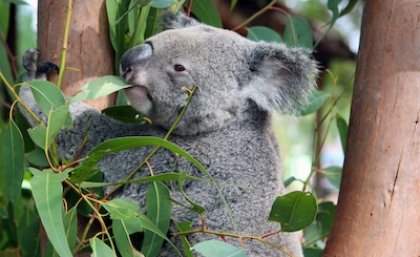
A delegation of scientists from The Koala Research Network (KRN) presented sombre evidence on the fate of the koala to a senate inquiry in Brisbane this week.
The Senate Inquiry into the status, health and sustainability of Australia's koala population is set to determine whether the koala will be listed under The Environment Protection and Biodiversity Conservation Act.
Most of the scientists presenting at the inquiry were from The University of Queensland (UQ), and all were members of the Koala Research Network.
“The Koala Research Network is a group of over 60 researchers from universities and government departments and private groups working with koalas,” KRN spokesperson and UQ Associate Professor Clive McAlpine said.
“Collectively we have published over 200 scientific papers and reports on koala biology, ecology, health and disease and conservation”.
From this body of evidence, the researchers say the long-term outlook for Australia’s koala populations is grim.
“There are a number of statistics that indicate the serious decline in koala population numbers will continue” Associate Professor McAlpine said.
“Habitat loss, disease, urbanisation, dog attacks and climatic extremes are all impacting upon population numbers”.
The KRN believes a critical priority is establishing a national koala monitoring strategy to prioritise conservation actions and ensure valuable resources are not squandered.
“The Commonwealth needs to be proactive on this issue. It is important to act now before the cost of recovery becomes too high,” Associate Professor McAlpine said.
“The KRN is keen to cooperate with the government in implementing this initiative”.
Statistics
• There has been a 51 per cent decline in less than three years and a 64 per cent decline in the 10 years since monitoring began of the Koala Coast koala population.
• Koala populations are likely to contract eastwards and southwards to coastal regions under a projected hotter and drier climate under future climate change, with populations in arid and semiarid areas of Queensland already showing signs of contractions towards the coast.
• Koala populations in the Mulgalands centred on Charleville are estimated to have declined from 50-60,000 in 1996 to 10-12,000 in 2009 due to drought and drought-induced tree dieback.
• Koala populations in northeast will continue to decline as the human population increases, unless specific management actions are taken.
• The long-term impact of low-genetic diversity of Victorian and Kangaroo-Island populations are not well understood.
• An important unknown is the threat posed by Koala retro-virus. Koalas in Queensland have high-prevalence of the virus in their blood and are more likely to die from cancer. The Kangaroo Island population was sampled for the virus 3 times. Prevalence has increased from 0 per cent in 2004 to 15 per cent in 2006 and 36 per cent in 2009.
For more information see the Koala Research Network website at www.gpem.uq.edu.au/krn
Media: Associate Professor Clive McAlpine, c.mcalpine@uq.edu.au, 07 3365 6620 or Dr Bill Ellis w.ellis@uq.edu.au, 0428 105 275.
.jpg)












